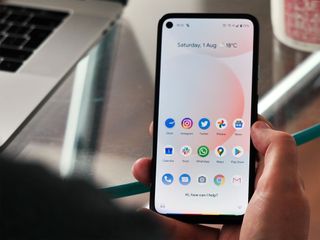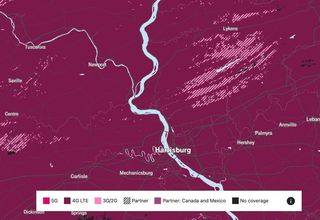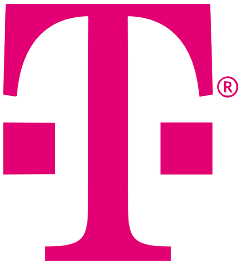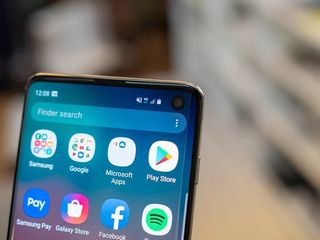4G LTE Coverage Map: Complete T-Mobile, Verizon, AT&T Cities

For most of us, 4G LTE is still the main way our phones get connected, and it pays to know which carrier has the best coverage in your area. 5G coverage is expanding quickly on all carriers, but if you're still using an LTE phone and don't need to upgrade yet, you can still get pretty much anything done on LTE. There are three major networks to consider, AT&T, T-Mobile, and Verizon. Even if you don't get service directly from that network provider, you'll probably still use one of these networks at some point.
4G LTE Coverage Map What's on the map?
4G LTE is the network that most of us connect to most of the time when we're away from Wi-Fi. Most carriers offer LTE coverage in most of the places we go across the country, but there are some key things to look out for on their coverage maps.
First and foremost, not all 4G is LTE. Back when carriers were adapting to smartphones, more speed was needed in a hurry. Some carriers like AT&T and T-Mobile were able to dramatically improve their 3G speeds with some tower upgrades. This HSPA+ upgrade allowed for speeds around 40Mbps, with most people seeing around 10Mbps on a good day. With most LTE networks delivering very similar results, these networks were often referred to as 4G.
For the most part, all of this fake 4G coverage has been replaced by LTE or renamed back to 3G, but some MVNOs and some coverage maps still reference this. Just look for LTE or 4G LTE to be safe.
Another thing to look out for is off-network roaming. Whether it's called off-net or extended LTE, it means the same thing; you're connecting to another carrier's tower. Speeds can be adequate, but you're still a lower priority than a direct subscriber and should look elsewhere if this will be your main coverage.
4G LTE Coverage Map Does 5G matter yet?
If you're shopping for a new phone or plan, 5G is all the rage. While 5G coverage is expanding rapidly, it's still nowhere near as common as LTE. If you're buying a new phone, it makes a lot of sense to get one with 5G, but if your LTE phone is working fine, it's not a good enough reason to upgrade. At least not yet.
You can also score some great deals on the best cheap Android phones that still use LTE for connectivity. If speed isn't all that important to you, you can save a lot by ignoring the next generation for now.
Be an expert in 5 minutes
Get the latest news from Android Central, your trusted companion in the world of Android
4G LTE Coverage Map AT&T LTE

If you're looking at AT&T's coverage map, anything in blue has coverage. Even the areas covered by 5G will have LTE coverage. Areas in green are using either AT&T's transitional 4G HSPA+ network or 3G. Your connection quality can vary quite a lot in these areas, so don't rely on AT&T for consistent coverage in these areas. Still, for the most part, these areas are limited to very rural areas and shouldn't be an issue for most people.
Off-net coverage in orange can technically use an LTE connection from another carrier; however, your speeds will likely be very limited on these connections. AT&T uses off-net coverage for Puerto Rico, so if you travel there frequently, you should consider another carrier.

Great LTE speed
AT&T has a great LTE network, but it relies on older technology and off-net coverage a bit more than some of its competitors.
4G LTE Coverage Map T-Mobile LTE

On the top-left corner of T-Mobile's coverage map, you can toggle 5G on and off to just see the data that's relevant to you. This is important because T-Mobile is one of the only carriers that has spectrum that it uses for 5G but not LTE. For the most part, that spectrum will completely overlap LTE coverage, but it's nice to have the option.
Most of T-Mobile's network is covered by LTE, with spots of pink 3G still showing up in some rural areas and valleys. T-Mobile has seen a lot of improvement in network density in the past couple of years thanks to adding Sprint coverage for its customers and deploying its own 600MHz spectrum with LTE and 5G. The importance of this low-frequency spectrum is that it can reach further than previous LTE deployments from the same towers. This has allowed T-Mobile to fill in a lot of gaps.
Keep an eye out for the diagonal lines overlaid on some of T-Mobile's maps. This indicates that partner coverage, which most of us know as roaming. Even though this can be an LTE connection, it will likely be limited in speed compared to a full T-Mobile LTE connection. T-Mobile does have great coverage in Puerto Rico, including 5G.
T-Mobile is one of the only carriers where upgrading your phone to a newer model, even one with just LTE, can have a significant impact on your coverage. It's newer 600MHZ band 71 coverage will only work if your phone supports it, and some older models do not.

5G growth also improves LTE
T-Mobile has been investing in spectrum and has seen great coverage improvements thanks to it. There are still some holes with spots of 3G, but most people will have a great connection.
If you're a Sprint customer, There are a few important things to know. If you look at the Sprint coverage map you'll see quite a bit more blank spots than the other carriers. You'll also see extended LTE coverage in many areas. This extended coverage uses towers licensed from other carriers for coverage. While speeds should be reasonably high while connected to these, it often won't be as good as being directly on a Sprint operated tower.
If your phone supports it, T-Mobile allows Sprint phones to use its network like a native T-Mobile phone, and some users have even been able to ask Sprint to set their phone to prefer T-Mobile's network. You will need a new enough phone to support T-Mobile's network for this to work, however. As people transition to 5G, Sprint's coverage will start to look a lot more like T-Mobile's.
4G LTE Coverage Map Verizon LTE

Verizon's LTE network is huge. If you're looking for consistent coverage, this network is going to be one of your best bets. Verizon's sprawling LTE coverage makes up the majority of its coverage map with only a few remote areas dropping down to 3G. If you sign up for Verizon, you can expect to have LTE coverage just about anywhere in the nation, including Puerto Rico.
On Verizon's coverage map, anything in red has LTE coverage. Some places are now showing 5G coverage, but those placed will also be covered with LTE since Verizon shared the same equipment between the networks.

Consistency is key
Verizon's network delivers consistently fast speeds across the nation. If you need great coverage, even in rural areas, Verizon is a great choice.
4G LTE Coverage Map What phone do you need?

Just about any phone that has come out in the last few years designed for the U.S. market has support for LTE. While some older phones are carrier locked, there are plenty of options at every price point that works on every major carrier. Be sure to check with a carrier before signing up to make sure your phone supports all of its bands for the best possible connection. T-Mobile customers, for example, will have the best experience with a phone that supports T-Mobile's higher 2.5GHz spectrum it got from Sprint as well as its own newer 600MHz spectrum.

Unlocked and affordable
The Google Pixel 4a is a great phone that still relies on LTE for its mobile connectivity. With support for all major carriers, it's a great phone to try out multiple wireless networks.
When Samuel is not writing about networking or 5G at Android Central, he spends most of his time researching computer components and obsessing over what CPU goes into the ultimate Windows 98 computer. It's the Pentium 3.

